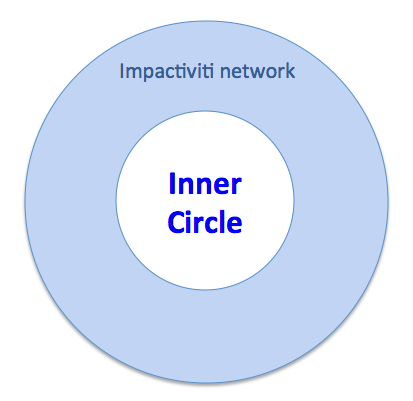Today, I want to pull back the veil a bit on one of the most important parts of my network.
The Impactiviti pharmaceutical network is pretty broad, encompassing a range of professionals in the pharma/biotech/med devices/healthcare sphere.
But then there’s my “Inner Circle,” and that group provides one of the best pools of expertise I can offer you.
The “Inner Circle” is my closer group of industry clients and partners who support each other through recommendations of vendors and other resources.
How does it work? Here’s a very recent example:
Someone who took on a newly-created training role was looking for a potential vendor(s) who could provide curriculum for a very specialized niche group. I spent time brainstorming the need with this individual and more carefully defining the need. This was a case where I felt I should reach out to my Inner Circle for their advice (these Inner Circle e-mails, which occur about every 2 weeks or so, are anonymous so no identifying client information is shared). In this case, I got back several well-targeted recommendations, including some companies that I was familiar with, but wasn’t sure could extend out to this niche. Today, I’ll make specific recommendations back to my client.
On a regular basis, people in my Inner Circle expose me to previously-unknown companies, some of whom become valued Impactiviti referral partners. In fact, in recent months, Inner Circle recommendations have led me to a great Managed Markets training supplier, a boutique leadership development firm, and a virtual facilitation training company – all of whom I can now bring forward as targeted referrals.
This two-way recommendation network effect makes it so much easier to identify the best resources for specific needs.
When you call on us here at Impactiviti, you get far more than Steve Woodruff. You get unmatched expertise from your peers. So, when it’s time to seek out vendor/partners – contact us. We can provide the best expertise available, without charging you a penny.
(stevew at impactiviti dot com; 973-947-7429)
—–
Related post: The Pharma Roller-coaster



